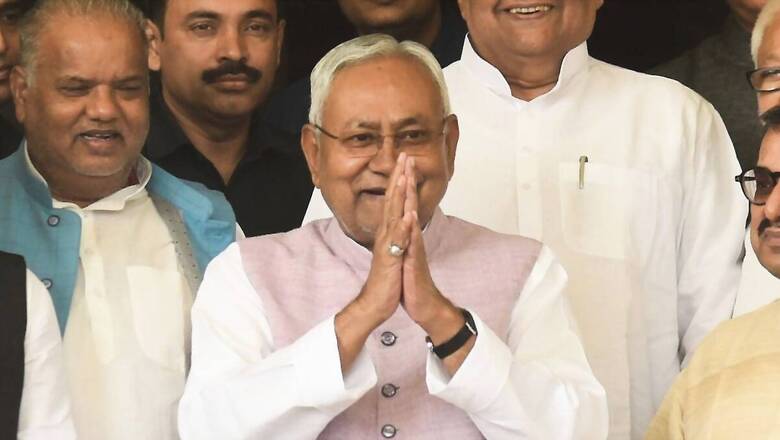
views
Bihar Chief Minister Nitish Kumar on Tuesday proposed to increase the caste quota in the state from 50 per cent to 65 per cent excluding the Economical Weaker Section (EWS) quota. The bill will be tabled in the state assembly on Friday.
Speaking in the state assembly, the Chief Minister said that he was in favour of raising the quotas for Scheduled Castes, Scheduled Tribes and Other Backward Classes in the state.
Kumar made a statement to this effect while taking part in a debate that followed the tabling of a detailed report on the caste survey commissioned by his government.
The chief minister was of the view that reservations for the OBCs needed to be raised from 50 to 65 per cent while for the SCs and STs, which together account for a 17 per cent quota, the limit should be raised to 22 per cent.
“We will do the needful after due consultations. It is our intent to effect these changes in the current session, he said.
The Chief Minister also said Rs 2 lakh will be given to poor families to uplift their lives.
Bihar Caste Census Report
According to the Bihar government’s data, the state’s total population stood at a little over 13.07 crore, out of which the Extremely Backward Classes (36 per cent) were the largest social segment followed by the Other Backward Classes at 27.13 per cent.
Backward caste politicians have long claimed that the population of castes they represented numbered far more than the conventional wisdom based on the 1931 census, which was the last time a caste headcount was conducted and released.
The survey also stated that Yadavs, the OBC group to which Deputy Chief Minister Tejashwi Yadav belongs, were the largest in terms of the population, accounting for 14.27 per cent of the total.
Dalits, also known as the Scheduled Castes, accounted for 19.65 per cent of the total population in the state, which is also home to nearly 22 lakh (1.68 per cent) people belonging to the Scheduled Tribes.
Those belonging to the “unreserved” category, which denotes the proverbial “upper castes” who dominated politics till the Mandal wave of the 1990s comprise 15.52 per cent of the total population.


















Comments
0 comment